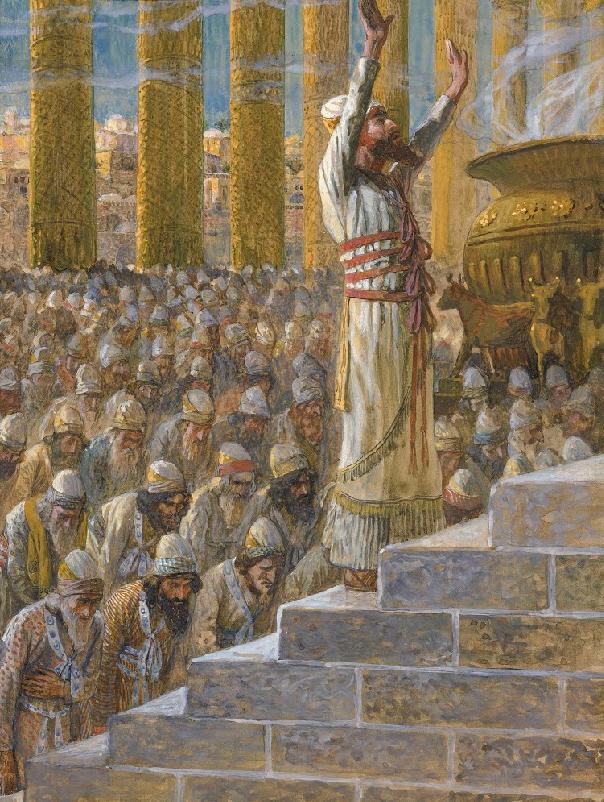
Parashat Vayakhel
♦
Parashat Vayakhel
Victor R. Salanga
27 February 2019
The wise people…said to Moses, “The people are bringing too much for the work … that the Lord charged to do.” Moses [said] “Let each man and woman do no further task for the holy donation,” and the people were held back from bringing. And the task was enough to all the task, and more. (Exodus 36:4-7)
The Torah portion begins with Moses assembling (root q-h-l) Israel, a clear reversal of an earlier assembling (q-h-l) of Israel, that of building the Golden Calf (Exodus 32). This time it is not an assembly to disobey the Lord, but to obey him! And obey Israel did—following the Lord’s instructions to the letter, best illustrated in Exodus 36:8-38. It is a verbatim repetition of Exodus 26:1-32, the instructions of the Lord for building the Tabernacle. Where one would have expected some change in the repetition to unearth a world of meaning, here the change is minimal and marginal. And there is very good reason: “what really matters is the repetition itself, the fact that the Tabernacle is now faithfully assembled in all its prescribed details” (Alter p. 520). A further proof: whereas in Exodus 26, the verbs were in the imperative, now, they are in the past. Israel at last has faithfully obeyed the Lord’s commands.
If the main theme of the parashah is disobedience-obedience, perhaps another theme may be pointed out: excess of sin-excess of love, as exemplified by the quote above. Whereas in the Golden Calf episode, the people took off their golden earrings to fashion their own god, here the chastened people bring not only gold, but a lot more: “silver and bronze, and indigo and purple and crimson linen and goat hair, and reddened ram skins and ocher-dyed skins and acacia wood, and oil for the lamp and spices for the anointing oil and for the aromatic incense, and carnelian stones,” and so on (Exodus 35,6-10)! There were so many gifts that Israel had to be restrained and told to stop. And even to that point, there was enough and more! Etz Hayim comments: “the outpouring of donations produced materials far in excess of what was needed, and so the people had to be persuaded to discontinue their contribution” (p.556). What had begun as excess of worry and fear and anxiety and of sin because Moses had tarried, all of that gave way to open-heartedness and devotion and generosity, an excess of love! This excess of love and generosity is reinforced by the repeated use of “heart” (leb), “wise-hearted” (hakam leb), “everyone whose heart moved him/her” (ns’ leb), “everyone whose spirit urged him/her (ndb ruah). Not to be missed is the women’s “unselfish generosity and devotion in donating their valuable mirrors for the Tabernacle” in Exodus 38:8 (Etz Hayim, p.562)! Each of these points is not mentioned in the Golden Calf episode. Here in unmistakable contrast, the whole community of Israel, wisdom-hearted and urged on by the spirit, with the special participation and contribution of the women—all obeyed the Lord to the letter and with excess of love!
The haftarah about Solomon building the Temple shares similar vocabulary, not only with the building of the Tabernacle but also with the Creation story (See Etz Hayim, p.574). The sages of old indeed saw that building the Tabernacle and the Temple was a NEW creation! Only the Lord can forgive sin and re-create in an entirely new way the spirit of Israel … and us!
For Reflection and Discussion: [1]Recall an experience of sin and forgiveness and reconciliation of relationships. Did your response result in excess of love and devotion? Did you have to be restrained? [2]In what ways can your experience be seen as new creation? Bibliography: Alter, The Five Books of Moses (W.W. Norton & Co., New York 2004), Etz Hayim (The Rabbinical Assembly, New York 2004); JPS Hebrew-English Tanakh (The Jewish Publication Society 2000)

Solomon Dedicates the Temple at Jerusalem – James Jacques Joseph Tissot (French, 1836-1902) and Followers c. 1896-1902
Source: Google Arts & Culture

This week’s teaching commentary was prepared by
Victor R. Salanga, S.J.,
Fordham Jesuit Community, New York, Bat Kol alumnus, 2003,
PLEASE NOTE: The weekly Parashah commentaries represent the research and creative thought of their authors, and are meant to stimulate deeper thinking about the meaning of the Scriptures. While they draw upon the study methods and sources employed by the ISPS-Ratisbonne, the views and conclusions expressed in these commentaries are solely those of their authors, and do not necessarily represent the views of ISPS-Ratisbonne. The commentaries, along with all materials published on the ISPS-Ratisbonne website, are copyrighted by the writers, and are made available for personal and group study, and local church purposes. Permission needed for other purposes. Questions, comments and feedback are always welcome.
Share this with your friends
Institute Saint Pierre de Sion – Ratisbonne – Christian Center for Jewish Studies
Congregation of the Religious of Our Lady of Sion
Contact us:
secretary@ratisbonne.org.il
26 Shmuel Ha-Naguid Street – Jerusalem
Subscribe to Newsletter

No responses yet